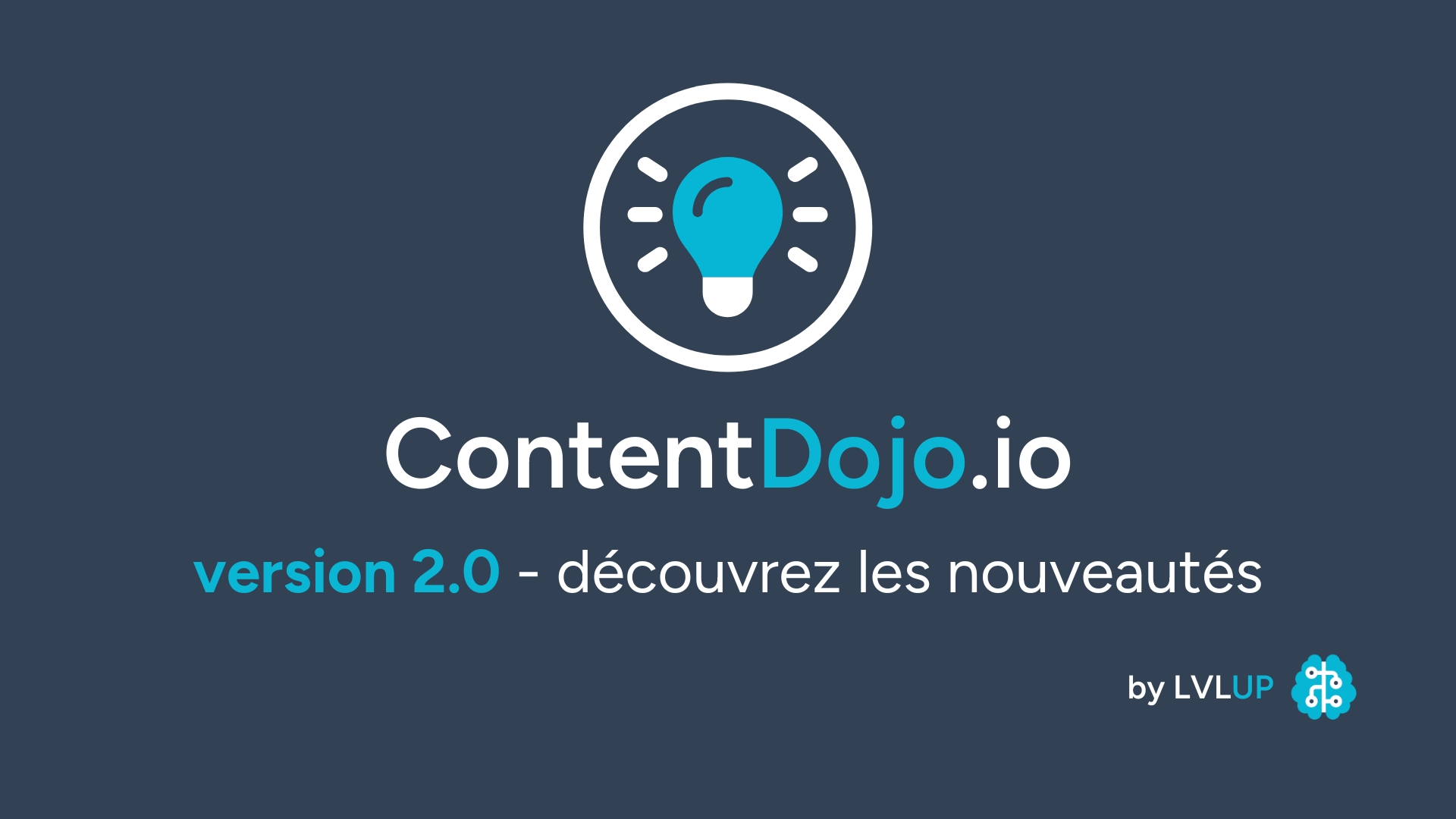Maîtriser le brainstorming : 20 conseils pour une génération d'idées ultra-efficace

Imaginez-vous au cœur d'une salle de réunion, entouré de vos collègues les plus brillants. La mission du jour ? Générer des idées innovantes pour le prochain grand projet de l'entreprise. La pression est là, mais le flux créatif semble être à l'arrêt. Combien de fois vous êtes-vous retrouvé dans cette situation, cherchant désespérément à déclencher une véritable tempête de brainstorming ? La bonne nouvelle est que, lorsqu'il est bien fait, le brainstorming peut être une source inestimable de génie collectif. Plongez dans les 20 astuces éprouvées ci-dessous pour dynamiser vos sessions de brainstorming et transformer ces moments en mines d'or d'innovation. 🚀
🎯 Définissez des objectifs clairs
Avant de lancer votre session de brainstorming, fixez un objectif précis. Que vous visiez 10 nouveaux sujets de blog ou des stratégies marketing innovantes, connaître le résultat souhaité concentre l'énergie et les discussions de l'équipe. Un objectif clair agit comme une lumière directrice, garantissant que les contributions de chacun s'alignent avec le but de la session.
Notez votre objectif principal en haut de votre tableau de brainstorming ou de votre feuille, et rappellez-le aux participants tout au long de la session.
🧠 Esprits diversifiés
Les équipes diversifiées apportent une multitude de perspectives, d'expériences et d'approches créatives. Lors de brainstormings, surtout pour le contenu, il est bénéfique de recueillir les avis de personnes ayant des rôles, des antécédents et des domaines d'expertise variés. Un groupe diversifié peut remettre en question le statu quo et introduire des idées inattendues et innovantes.
Lorsque vous constituez votre équipe de brainstorming, invitez des membres de différents départements ou horizons. Si tout le monde pense de la même manière, envisagez de faire appel à une voix externe ou à un consultant pour obtenir une nouvelle perspective.
🤫 Pas de Jugements
Un environnement de brainstorming réussi est un lieu où toutes les idées sont les bienvenues et où les jugements sont mis de côté. Critiquer ou écarter des suggestions peut étouffer la créativité et décourager les participants. L'objectif est de favoriser un dialogue ouvert, où même les idées non conventionnelles peuvent en susciter de brillantes.
Établissez une règle de base dès le départ : toutes les idées sont valides. Si quelqu'un commence à critiquer, rappelez-lui doucement cette règle. Réservez les évaluations pour après la session, en vous concentrant uniquement sur la génération d'idées pendant celle-ci.
💡 Quantité avant qualité
Dans les premières étapes du brainstorming, l'accent devrait être mis sur la génération d'un grand nombre d'idées, et non nécessairement sur leur faisabilité ou qualité immédiate. Souvent, les concepts les plus innovants proviennent de discussions fluides. Plus tard, vous pourrez trier et affiner les meilleures idées.
Encouragez les participants à exprimer toutes leurs pensées sans trop réfléchir. Fixez un nombre cible d'idées à atteindre, en soulignant que l'objectif est la quantité. Ce n'est qu'après avoir atteint ce nombre que vous commencerez le processus d'évaluation.
🔄 Alternez les modérateurs
Avoir différents leaders pour les sessions apporte divers styles de facilitation et dynamiques, qui peuvent susciter de nouvelles idées et perspectives. Chaque modérateur aura une approche unique, se concentrant peut-être sur différentes incitations ou méthodes, conduisant à un ensemble d'idées plus riche.
Planifiez plusieurs tours de brainstorming et changez la personne qui dirige à chaque fois. Cette personne donne le ton, guide la discussion et assure la participation. Si possible, choisissez des modérateurs issus de différents départements ou rôles pour maximiser la diversité d'approche.
🌲 Changez de décor
L'environnement joue un rôle crucial dans la stimulation de la créativité. Sortir du cadre habituel du bureau ou essayer un nouveau lieu peut inspirer de nouvelles idées. La nature, en particulier, a été montrée pour stimuler la créativité et réduire le stress.
Pour votre prochaine session de brainstorming, envisagez de vous réunir dans un parc, un café cosy ou même simplement une autre pièce. Si vous travaillez à distance, changez votre arrière-plan virtuel ou encouragez les participants à brainstormer depuis un nouvel endroit, comme leur balcon ou leur jardin.
🕒 Fixez des limites de temps
Imposer une contrainte temporelle peut rendre les sessions de brainstorming plus ciblées et productives. Une horloge qui tourne peut dynamiser les participants, les pousser à penser rapidement et éviter la sur-analyse. De courtes périodes intenses de brainstorming peuvent souvent produire plus d'idées que des sessions longues et étirées.
Divisez votre brainstorming en sprints de 10-15 minutes. Utilisez un minuteur pour rester sur la bonne voie. Après chaque sprint, prenez une courte pause avant de plonger dans le suivant. Cela maintient l'énergie haute et les idées en mouvement.
🛑 Les pauses sont essentielles
Un brainstorming continu peut conduire à une fatigue mentale, diminuant la qualité des idées. Insérer de courtes pauses permet aux participants de se rafraîchir, se recharger et revenir avec un état d'esprit plus clair. Les pauses offrent également un moment de réflexion individuelle, qui peut favoriser des idées plus profondes.
Pour chaque heure de brainstorming, intégrez des pauses de 10 minutes. Encouragez les participants à s'éloigner de leur espace de travail, à s'étirer ou à prendre une collation. Ces moments de détente peuvent stimuler une réflexion nouvelle et revigorée.
🎲 Utilisez des brise-glaces
Commencer une session de brainstorming avec une activité amusante et légère peut instaurer un ton positif, réduire les inhibitions et encourager une communication ouverte. Les brise-glaces peuvent aider les membres de l'équipe à se sentir plus à l'aise pour partager leurs idées, surtout s'ils se rencontrent pour la première fois ou s'il y a un mélange de niveaux hiérarchiques.
Commencez votre session avec un brise-glace rapide et pertinent. Cela pourrait être le partage d'une anecdote amusante, un tour de narration de deux minutes ou un jeu rapide. Le but est de détendre tout le monde et de commencer à discuter avant de plonger dans le sujet principal.
✍️ Aides visuelles
Les outils visuels peuvent améliorer la compréhension, suivre les idées et promouvoir l'engagement pendant le brainstorming. Qu'il s'agisse d'un simple tableau blanc, de post-it ou d'outils numériques de cartographie mentale, les aides visuelles aident à structurer les pensées, à afficher les connexions et à stimuler la pensée créative.
Équipez votre espace de brainstorming d'outils visuels. Commencez par noter le sujet principal, et à mesure que les idées afflueront, élargissez et catégorisez-les. Encouragez les participants à dessiner ou à utiliser des couleurs, rendant le processus dynamique et visuellement stimulant.
🔈 Encouragez toutes les voix
Dans chaque groupe, il y a généralement des voix plus fortes et d'autres plus discrètes. Pour une session de brainstorming bien équilibrée, il est essentiel de s'assurer que les idées de tous sont entendues. Parfois, les perspectives les plus uniques et précieuses viennent de ceux qui parlent moins fréquemment.
En tant que modérateur ou leader, faites un effort conscient pour solliciter les contributions des participants les plus silencieux. Créez un espace sûr où chacun se sent valorisé. Envisagez d'utiliser des techniques en ronde, où chaque personne a un tour pour partager une idée, garantissant que chacun ait un moment sous les projecteurs.
📱 Moments sans technologie
Les distractions numériques peuvent entraver la libre circulation des idées pendant le brainstorming. En désignant des intervalles spécifiques sans technologie, vous pouvez favoriser une concentration plus profonde et encourager une véritable connexion et collaboration humaine.
Réservez certaines parties de votre session où les smartphones, ordinateurs portables ou autres gadgets sont mis de côté. Informez les participants à l'avance et rappelez-leur l'objectif : une attention totale à la tâche en cours. Soulignez la valeur de ces moments pour un brainstorming pur et sans distraction.
🚀 Penser grand
La pensée "blue-sky" (penser grand) se réfère à un brainstorming sans contraintes, où tout est possible, quelle que soit la faisabilité. Cela encourage des idées follement créatives qui peuvent parfois conduire à des innovations révolutionnaires ou du moins susciter des idées plus concrètes.
Consacrez une partie de votre session à la pensée "blue-sky". Demandez aux participants d'oublier temporairement les budgets, les ressources ou toutes limitations. Encouragez-les à rêver grand, à penser hors des sentiers battus et à imaginer le scénario idéal. Vous serez surpris des directions créatives que cela peut entraîner!
🎧 Brainstorming silencieux
Tout le brainstorming n'a pas besoin d'être vocal. Le brainstorming silencieux permet aux participants de noter leurs idées individuellement avant de les partager avec le groupe. Cette méthode réduit l'influence des voix dominantes, offrant à chacun une plateforme égale et révélant souvent des pépites inattendues.
Fournissez aux participants du papier ou des outils numériques. Allouez un temps défini pour la génération d'idées en silence. Une fois le temps écoulé, rassemblez toutes les contributions et discutez-en collectivement. Cela garantit un éventail diversifié d'idées de tous les participants.
🔄 Inversion des rôles
Se mettre à la place de quelqu'un d'autre peut offrir une nouvelle perspective et générer des idées de contenu uniques. En demandant aux participants de réfléchir du point de vue d'un concurrent ou d'un client, vous pouvez découvrir des lacunes dans votre approche actuelle et des moyens innovants de les combler.
Lors de votre session, réservez un segment pour l'inversion des rôles. Incitez les participants à adopter un rôle spécifique, que ce soit un concurrent, un client ou même quelqu'un d'un autre secteur. Ensuite, brainstormez des idées de ce point de vue, fournissant des informations qui pourraient avoir été négligées de votre perspective habituelle.
💬 Tours de retour d'information
Bien que la phase initiale de génération d'idées doive être exempte de jugement, les tours ultérieurs de retour d'information peuvent être essentiels. Ces discussions aident à affiner les idées, à explorer leur viabilité et à identifier les défis ou améliorations potentiels. Un retour constructif propulse les idées du bon au grand.
Après la phase principale de brainstorming, réservez du temps pour les retours d'information. Permettez aux participants de présenter brièvement leurs idées, suivies d'une session de retour structurée. Encouragez les critiques constructives, en se concentrant sur "comment pouvons-nous améliorer cela?" plutôt que de simplement pointer les défauts.
📋 Donner des devoirs
Une préparation peut améliorer considérablement la qualité d'une session de brainstorming. En demandant aux participants de venir avec quelques idées pré-conçues, vous garantissez que la session commence avec un élan. De plus, des recherches et réflexions individuelles peuvent apporter diverses perspectives à la table.
Avant la session de brainstorming, envoyez un bref sujet aux participants. Demandez-leur de préparer 2-3 idées liées au sujet. Cela les prépare non seulement pour la session, mais garantit également qu'il y a un ensemble initial d'idées sur lequel construire lorsque la réunion commence.
🔄 Rotation des groupes
Si vous brainstormez avec une équipe plus large, se diviser en petits groupes peut favoriser des discussions plus intimes et garantir que la voix de chacun est entendue. La rotation de ces groupes garantit que les idées ne stagnent pas au sein d'un même groupe de personnes et favorise la pollinisation croisée des pensées.
Divisez les participants en petits groupes, attribuant à chacun un sujet ou un aspect du sujet principal. Après un certain temps, mélangez les membres pour former de nouveaux groupes et changez les sujets. Ce processus garantit des interactions variées et une collection d'idées plus riche issue de toutes les combinaisons de l'équipe.
🤖 Intégrez la technologie
Le brainstorming moderne peut être amélioré avec l'aide d'outils et de plateformes numériques. Ceux-ci peuvent faciliter le suivi des idées, voter pour les concepts favoris et même une collaboration en temps réel pour les équipes à distance. L'utilisation de la technologie peut simplifier le processus et capturer chaque idée brillante.
Explorez des outils de brainstorming numériques tels que Miro, MURAL ou Trello. Ces plateformes offrent des tableaux collaboratifs, des notes autocollantes et des fonctionnalités de vote. Présentez votre outil choisi aux participants avant la session, garantissant que tout le monde est à l'aise avec les bases et peut participer efficacement.
🧘 Échauffement de pleine conscience
Commencer par un court exercice de pleine conscience ou de méditation peut aider les participants à vider leur esprit, à réduire le stress et à améliorer leur concentration. Cet état d'esprit centré peut être plus réceptif aux nouvelles idées et favoriser des connexions plus profondes entre les pensées.
Démarrez votre session de brainstorming avec un exercice guidé de pleine conscience de 5 minutes. Il existe plusieurs applications et ressources en ligne qui proposent des guides de méditation courts. L'objectif est de calmer l'esprit, d'éliminer les distractions et de préparer mentalement les participants au voyage créatif qui les attend.




